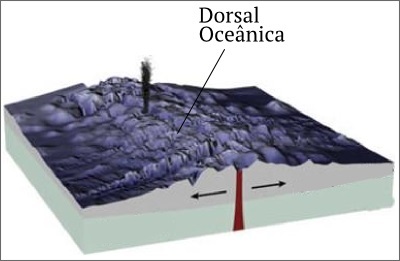Have you ever wondered why we don't feel the earth turn? The Earth performs several complex movements: it translates around the Sun at more than 100,000 km/h, in an elliptical trajectory, it also rotates in around its own axis, with speeds above 1600 km/h in the Ecuador region, in addition, it performs a slow precession movement, caused by the torque gives gravitational force exerted by the Sun and the Moon.
Lookalso:What if the Earth stopped rotating?
Why don't we feel the Earth rotate?
To answer the question, we must first pay attention to the following fact: not feel the speed, but the acceleration. For example: if you are inside a magnetic levitation train, with the windows closed and with a good soundproofing, you wouldn't be able to tell what speed you're moving, or even notice the movement from the train.
This is because you and the train move at the same speed. However, if the train were to accelerate or brake, you would notice your body being “thrown” forward or backward. This behavior of matter is called inertia and is explained to Newton's 1st law.
As we don't feel the speed, but the acceleration, the ability to feel the Earth's movement refers to the ability to perceive an acceleration related to its movement. This acceleration that exists here on Earth due to the attraction force of the sun and other stars, but that we are not able to feel is a kind of centripetal acceleration.
Centripetal acceleration can be produced by any force that takes a body to describe a circular path, as in the case of the Earth's orbit around the Sun, in this case, the force that keeps the Earth in orbit is the gravitational force exerted by the Sun and the centripetal acceleration produced by it is of nature gravitational.
The centripetal acceleration resulting from the Earth's motion relative to the Sun can be calculated by the following equation:

Thecp – centripetal acceleration (m/s²)
v – speed (m/s)
R – radius of the curve (m)
Earth's translation movement
Let's analyze the Earth's translational motion, for that, we'll make some reasonable approximations in order to estimate the magnitude of the centripetal acceleration to which the Earth is subject:
Firstly, we will consider that the radius of the Earth's orbit is constant and finally we will say that its translational speed does not change along the orbit.
We will assume that the average distance between the Earth and the Sun is 149,600,000 km (1,496.1011 m)
We will assume that the Earth's translation speed is approximately 30,200 m/s (30.2.104 m/s or 108,000 km/h)
We will use the values mentioned above to calculate the centripetal acceleration with the formula shown above:

Compared to Earth's gravity, which is approximately 9.8 m/s², the centripetal acceleration produced by the translation movement is very small: 0.006 m/s², about 1600 times smaller. Based on Newton's 2nd law, a 100 kg body subjected to this acceleration modulus would be subjected to a force of 0.6 N.
Lookalso: Water does not descend in different directions in the Earth's hemispheres!
Earth rotation movement
In addition to moving around the Sun, the Earth also performs a revolution around its own axis every period of approximately 24 h. This makes us subject to a centripetal acceleration produced by the rotational movement.
Furthermore, according to the equations of circular motion, the farther we are from the Earth's axis of rotation, the greater our Tangential velocity: for example, at Ecuador the tangential velocity exceeds 1600 km/h, while at the poles this velocity is practically null.
This movement was proven through a beautiful experiment: the Foucault's pendulum. The experimental arrangement consisted of a metallic globe connected to a 67 m long cable, which was attached to the ceiling. If the Earth were not rotating around itself, the pendulum would have to maintain a fixed plane of oscillation, which did not happen due to the centripetal force produced by the rotation movement.

Foucault's pendulum is used to demonstrate the Earth's rotational motion.
If we take into account that the average radius of the Earth is 6371 km (6,371.106 m) and that the tangential velocity at a point located on the Earth's Equator is 1675 km/h (465.3 m/s), the acceleration of 0.03 m/s²:

What makes the Earth rotate?
What makes the Earth maintain its rotational movements around itself and around the Sun is the conservation oftimeangular. Angular momentum is a physical quantity which measures the amount of motion related to rotation and there is a principle of physics that states that in the absence of external forces, the amount of angular momentum of a system must be maintained. constant.
Thanks to the enormous distances to other stars, it is possible to bring the solar system closer to a systemclosed (although it is not), since the forces exerted by other celestial bodies on us are much smaller than the force exerted by nearby planets and the Sun itself.
Thus, it is believed that the planets and asteroids that formed the solar system were captured by the Sun's gravity while translating space at great speed, starting to orbit it. Once there aren't any dissipative forces in space, like friction, the speed of the Earth relative to the Sun remains constant for a few million years and only changes if the radius of the Earth's orbit changes.
The possible cause of the Earth's rotational movement around itself has to do with gravitational torque. It is believed that the force exerted by the Sun and other planets caused the Earth to experience the action of torques (moments of a force) and acquire a rotational movement.
In addition to this hypothesis, there are indications that a few billion years ago the Earth collided with a very large asteroid, giving rise to the Moon and giving it a large amount of movement rotational.
despite no dissipative forces in space, when the Earth turns on itself, the great masses of water that accompany its rotation find barriers, platforms and great resistance to its movement, causing the Earth's rotational movement to decrease at a rate of 2 milliseconds per century (0.002 s). In other words: our days will get longer.
By Me. Rafael Helerbrock
Source: Brazil School - https://brasilescola.uol.com.br/fisica/por-que-nao-sentimos-terra-girar.htm


